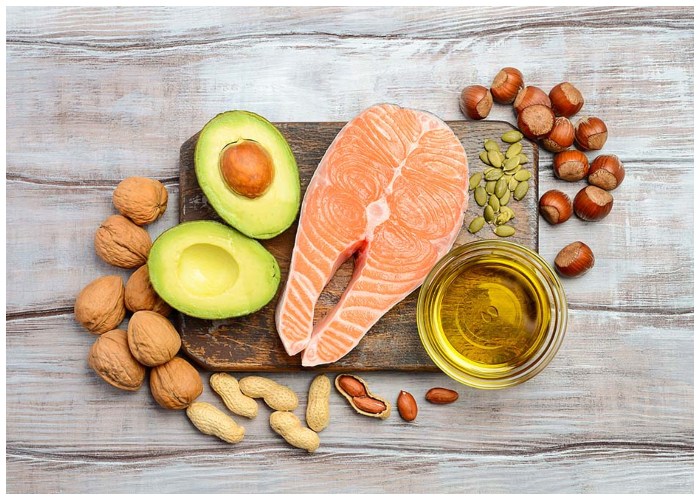In today’s world, with the growing awareness of health and wellness, many people are eager to create meals that are both delicious and nutritionally balanced. A perfectly balanced meal should provide a variety of nutrients that support your overall well-being, giving you energy, supporting your metabolism, and promoting long-term health. But how do you ensure that every recipe you prepare is truly balanced? The secret lies in understanding the core components of a healthy meal and how to combine them effectively.
In this article, we will uncover key nutrition tips for creating meals that are satisfying, wholesome, and nourishing. Whether you’re cooking for yourself or your family, these tips will help you create perfectly balanced meals every time.
1. Include a Variety of Macros: Protein, Carbs, and Healthy Fats
The first step to a balanced meal is understanding the importance of macronutrients—protein, carbohydrates, and fats—and ensuring that each meal contains all three in the right proportions.
- Protein: Protein is essential for muscle repair, immune function, and maintaining healthy skin and hair. Good sources include lean meats, fish, eggs, tofu, beans, lentils, and nuts. Aim to include protein in every meal to help keep you feeling full and satisfied.
- Carbohydrates: Carbs provide your body with the energy it needs to function properly. For a well-balanced meal, choose complex carbohydrates such as whole grains (quinoa, brown rice, oats), starchy vegetables (sweet potatoes, squash), and legumes (beans, lentils). These options are nutrient-dense and packed with fiber, which supports digestion and helps regulate blood sugar levels.
- Healthy Fats: Healthy fats are crucial for brain function, hormone production, and the absorption of fat-soluble vitamins like A, D, E, and K. Incorporate sources of healthy fats such as avocados, olive oil, nuts, seeds, and fatty fish like salmon. These fats promote satiety and are vital for overall health.

2. Fill Half Your Plate with Vegetables
Vegetables are rich in vitamins, minerals, antioxidants, and fiber, making them a key component of any balanced meal. Aiming to fill half of your plate with vegetables not only boosts the nutrient content of your meal but also helps keep calories in check.
- Leafy Greens: Kale, spinach, arugula, and other dark leafy greens are packed with nutrients like iron, calcium, magnesium, and vitamin K. They are also low in calories and high in fiber, making them an excellent base for any meal.
- Colorful Veggies: Incorporate a variety of colors into your meals—carrots, bell peppers, broccoli, tomatoes, and beets are all full of antioxidants, vitamins, and minerals. The more colorful your vegetables, the more likely it is that you’re getting a wide range of nutrients.
- Cooking Methods: When preparing vegetables, aim to use methods that preserve their nutrients, such as steaming, roasting, or sautéing with minimal oil. Avoid deep-frying, which can add unnecessary calories and unhealthy fats to your meals.
3. Portion Control: Balance Your Meal with the Right Amount of Food
While the components of a balanced meal are important, portion control plays a significant role in maintaining energy levels and managing your weight. Overeating—even healthy foods—can lead to unwanted weight gain and other health issues.
- Use the Plate Method: A simple way to control portions is by following the “plate method.” Fill half of your plate with vegetables, a quarter with lean protein, and the final quarter with whole grains or starchy vegetables. This visual guide helps create balanced meals that are rich in nutrients without overeating.
- Mindful Eating: Pay attention to your body’s hunger and fullness cues. Eating slowly and without distractions allows your body time to signal when it’s satisfied, helping prevent overeating.
4. Choose Whole Grains Over Refined Carbs
Incorporating whole grains into your meals is an excellent way to boost their nutritional value. Whole grains are rich in fiber, B-vitamins, and essential minerals like iron and magnesium. They help stabilize blood sugar levels, provide long-lasting energy, and support digestive health.
- Brown Rice and Quinoa: Brown rice, quinoa, and farro are excellent whole grain choices that pair well with a variety of proteins and vegetables. They provide a satisfying texture and are packed with nutrients.
- Whole Grain Breads and Pastas: Choose whole grain bread and pasta over refined versions. Whole grain options retain the bran and germ, which provide fiber, antioxidants, and important nutrients.
- Reduce Processed Carbs: Limit processed carbs like white bread, sugary cereals, and baked goods made with refined flour. These foods offer little nutritional value and can cause spikes in blood sugar.
5. Incorporate Healthy, Hydrating Drinks
Proper hydration is an often-overlooked element of a balanced meal. Drinking water and other hydrating beverages is essential for digestion, metabolism, and overall health. Skip sugary sodas and opt for water, herbal teas, or infused water with fruits and herbs for a refreshing and healthful option.
- Water: Make water your primary beverage with meals. Aim to drink at least 8 cups of water per day to keep your body hydrated.
- Herbal Teas: Green tea, peppermint tea, and chamomile tea offer antioxidants and hydration without added sugar.
- Infused Water: For a burst of flavor, infuse your water with fruits like lemon, cucumber, or berries. This encourages you to drink more water while adding a hint of natural sweetness.

6. Mind the Sodium: Use Herbs and Spices for Flavor
Too much sodium can contribute to high blood pressure and other health issues. When preparing meals, limit the use of salt and instead focus on enhancing flavor with fresh herbs, spices, and natural flavorings.
- Herbs and Spices: Basil, oregano, cilantro, thyme, turmeric, and cumin add bold, fresh flavors without the need for extra sodium. They also offer health benefits—such as anti-inflammatory properties and antioxidants.
- Citrus and Vinegar: Add a squeeze of lemon or lime juice or a splash of balsamic vinegar to brighten dishes and enhance flavor without relying on salt.
7. Balance with Fiber-Rich Foods
Fiber plays a key role in supporting digestion, maintaining stable blood sugar levels, and promoting heart health. Aim to include a variety of fiber-rich foods in your meals to help maintain overall wellness.
- Beans and Legumes: Lentils, chickpeas, black beans, and kidney beans are great sources of fiber and plant-based protein. They can be added to salads, soups, and stews for extra texture and nutrition.
- Fruits and Vegetables: Fruits like apples, berries, and pears, and vegetables like broccoli, carrots, and Brussels sprouts, are excellent sources of fiber. Try to incorporate a variety of these foods into every meal.
8. Include a Source of Healthy Probiotics
Probiotics, the “good” bacteria that promote gut health, are an essential part of a balanced meal. They support digestion, boost immunity, and can improve mood and mental clarity.
- Fermented Foods: Add fermented foods like yogurt, kefir, kimchi, sauerkraut, or miso to your meals. These foods provide live bacteria that help maintain a healthy balance in your digestive system.
- Probiotic Supplements: If you struggle to consume enough probiotic-rich foods, consider adding a supplement to your routine. Always consult with a healthcare provider to find the right type and dosage for your needs.